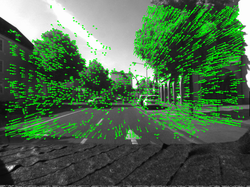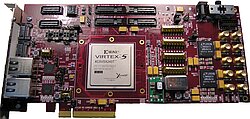

Future vehicle generations will be equipped with various sensor systems that produce large amounts of raw sensor data to support advanced drivers assistance systems. These systems aim to obtain an optimal perception of a vehicle's surroundings. Optical systems based on multi-camera setups produce an especially significant amount of image data. As image resolutions increase, powerful ECUs and computer architectures are required to process the image data in real-time, which is an inevitable requirement in a safety-critical automotive scenario.
In contrast to the resulting high processing demands, the electrical power budget in a vehicle is very limited. Therefore, standard processors and high performance GPUs are not viable solutions. FPGAs, on the other hand, are a strong candidate for potential future ECU architectures, as they provide comparatively large processing power combined with modest power consumption.
Therefore, the Institute of Computer and Network Engineering (IDA) and Volkswagen are working together on the conception and design of an FPGA-based architecture for camera-based driver assistance systems. In addition to the design of the computation platform, the key goals of the project are the development of an easy to use design environment and the implementation of selected algorithms from the field of environmental perception.

At IDA, two central aspects of the project will be addressed:
Other aspects, such as the concept of the platform, coupling with other ECUs and systems, the selection and implementation of image processing algorithms, and the integration of third party components will be covered together with Volkswagen. Additionally, there is a close relation to the Digital Chameleon project, which deals with methods and tools for an automated design process using the FlexWAFE architecture.